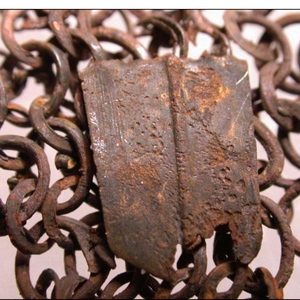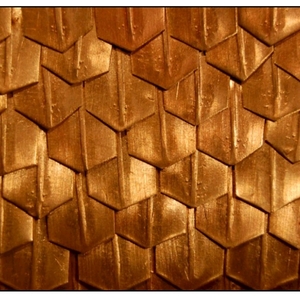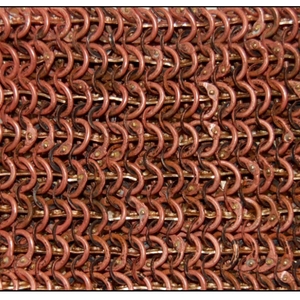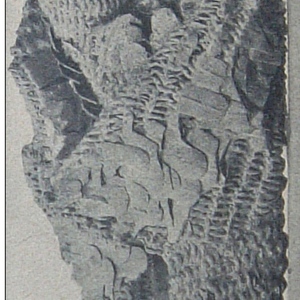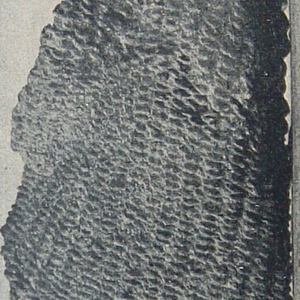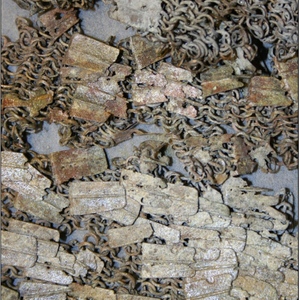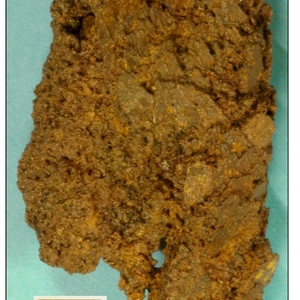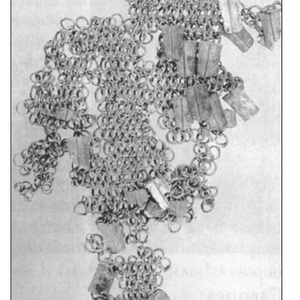Lorica plumata
Lorica Plumata (Latin: lorica plumata) is an ancient Roman scale-mail armor. The name is derived from the word "plūma" (meaning "feather") and literally translates to "feathered cuirass" due to the resemblance of its elongated plates with ribs in the middle to bird feathers. The term was first used by Marcus Junianus Justinus to describe the armor of the Parthians: "Munimentum ipsis equisque loricae plumatae sunt, quae utrumque toto corpore tegunt," which can be translated as "the lorica plumata is armor for both the rider and his horse, covering the entire body." There is also a passage by Silius Italicus, a Roman author from the 1st century CE, describing the armor of Consul Flaminius on the eve of the Battle of Lake Trasimene: "He put on his armor: a mail shirt to which iron scales were attached, alternating with gold."
Very few remains of such armor have been found, dating from the 60s CE to the last decades of the 2nd century CE, confirming Silius Italicus' words. The scales were attached to the chainmail fabric beneath them, rather than being connected by wire or cords through holes in the scales themselves, as in the usual squamata lorica. This construction gave this armor another name among modern historians: Lorica Hamata Squamataque.
The small size of both the scales and the rings that connect them (which were more labor-intensive to produce compared to the rings and scales of regular hamata and squamata armor), combined with the scarcity of findings and the mention of this armor in the panoply of a Roman consul, suggests that lorica plumata was an extremely costly and prestigious item, affordable only for senior officers in the Roman army. Despite its presumed status, modern researchers consider lorica plumata to be a fully functional combat armor, citing the fact that all archaeological finds of plumata remains were made in the same context as the remains of more traditional armor (military camps and battlefields), as well as the high protective properties of modern reconstructions of such armor.
Literature
1) Martijn A. Wijnhoven. Lorica Hamata Squamataque: A study of Roman hybrid feathered armour

 Gallery
Gallery






